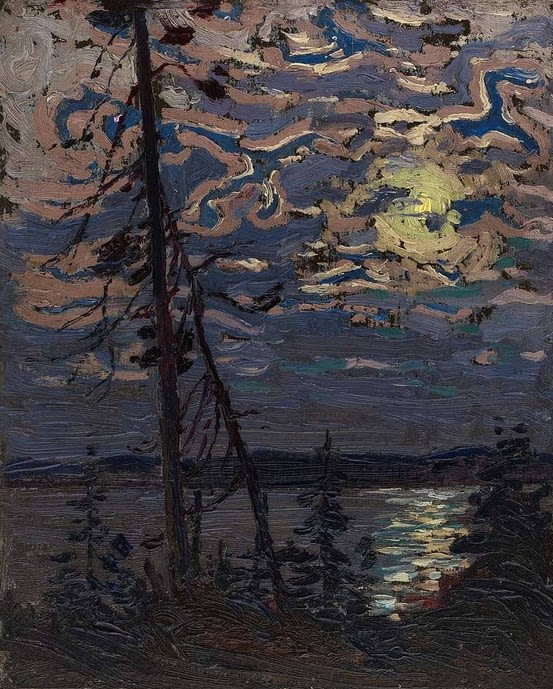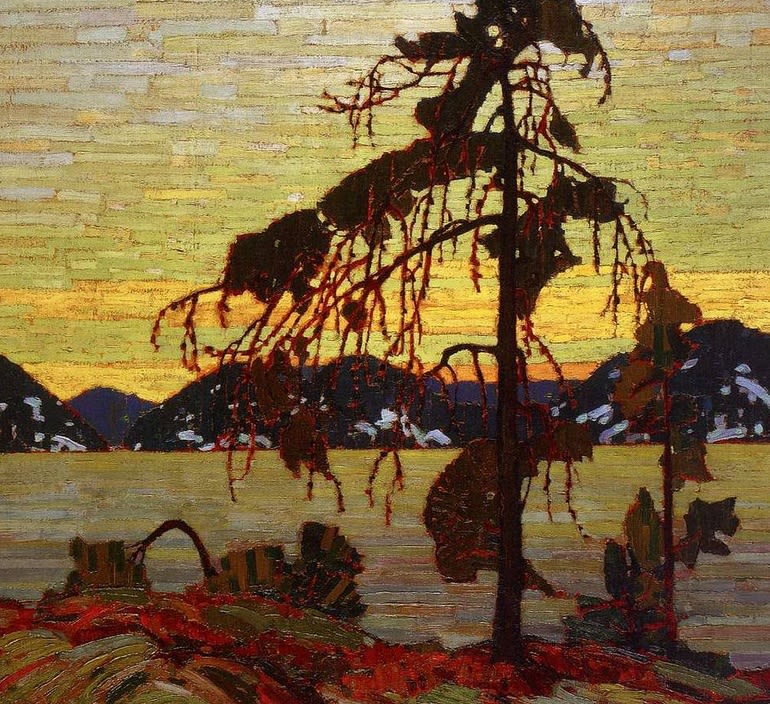
A Self-Taught Prodigy
Tom Thomson didn't start his artistic career in a conventional manner. He was largely self-taught, which perhaps lent a unique, untamed rawness to his art. Instead of adhering to established techniques or styles, Thomson found inspiration in nature, allowing it to guide his brush strokes.

Tom Thomson; Moonlight
The Algonquin Park Muse
Thomson's most profound inspiration came from Algonquin Park, a place he frequented. The park's serene lakes, dense forests, and changing seasons provided a palette of colours and moods that Thomson translated onto his canvas with unmatched passion. His paintings like "The Jack Pine" and "The West Wind" are not mere representations of the Canadian landscape; they're emotional, almost spiritual, interpretations.
 Tom Thomson; The Jack Pine
Tom Thomson; The Jack Pine
The Group of Seven and Thomson’s Influence
While Tom Thomson was not officially part of the Group of Seven—a collective of Canadian artists known for their landscapes—he was closely associated with them and had a profound influence on their work. It's often said that without Thomson, the Group of Seven might not have come into existence in the way they did.
Mystery Surrounding His Death
In 1917, Thomson's life came to a sudden and mysterious end when he was found dead in Canoe Lake in Algonquin Park. While the cause of his death remains a subject of debate and speculation—ranging from accident to foul play—it adds an element of intrigue to his life story.

Tom Thomson; Sunset, Canoe Lake
Legacy
Tom Thomson's influence on Canadian art cannot be overstated. He inspired a generation of artists to look at the Canadian wilderness with fresh eyes. His works invite viewers to not only see but also feel the landscape, making them timeless pieces that continue to captivate. While Tom Thomson may have left us early, his art ensures that his spirit will forever roam the forests and lakes of Algonquin Park